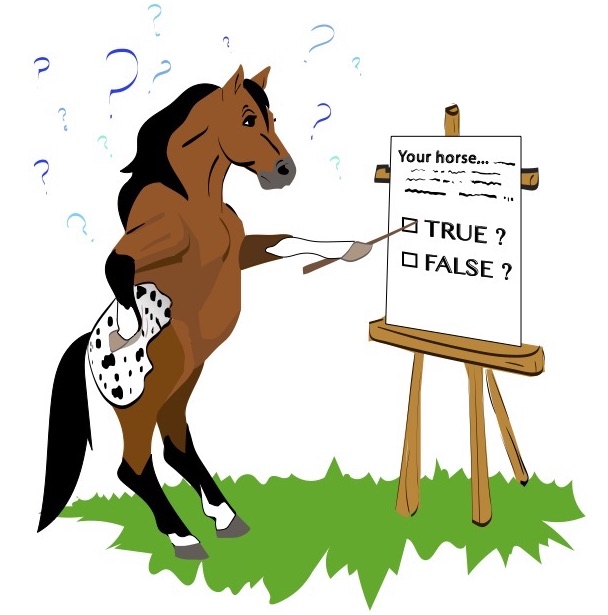
1. A horse learns most at the moment leg or rein pressure is
A) applied.
B) released.
C) increased.
2. True or false: Schooling in a snaffle, you should strive to maintain a straight line from the bit, through your hand, to your elbow.
T / F
3. A horse with a ‘soft’ poll is
A) prone to carrying his head too high.
B) overweight and flabby through the neck.
C) willing and able to flex through the throatlatch.
4. Horses tend to be
A) stiffer in their neck than in their lower spine.
B) stiffer on one side of their body than the other.
C) equally flexible on both sides of their body.
HOW’D YOU DO? (Answers below.)
1. B is correct. Your horse learns from the release of pressure (the reward), not the application or intensifying of it (the pull or the spur). As in all training, good timing is essential—so always reward each “try” by your horse with at least a brief release of pressure the very instant you feel him respond. That way, he correctly learns what you want. (Here’s a great exercise to help your hands learn when to release.)
2. T is correct. It’s a horseman’s adage that you should maintain a straight line from the bit, through your hand, to your elbow. To do so, your hands and forearms must maintain the same connection to your horse’s mouth no matter where he puts his head. (If you mostly ride one-handed, here’s how to finetune your reining hand.)
3. C is correct. A soft poll means your horse flexes willingly through his jaw and throatlatch when you pick up on the reins—vertically when you ask with both reins, or to the side when you ask with one rein. This means you’ve “captured” his poll. (Discover more of riding coach Don Murphy’s 10 tips to better horsemanship.)
4. B is correct. Most horses are naturally asymmetric, meaning they’re stiffer on one side and more amenable to bending on the other. This means each of your horse’s sides requires slightly different approaches, and you must train each side based on what it needs. (Learn more ride-smart strategies.)
Hey! Not already receiving H&R’s fun and informative newsletter? Sign up for The Ride.






